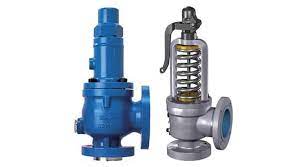
The chemical industry uses reactors, storage vessels, nitrogen receivers, and positive displacement pumps to carry out high pressure reactions. When the pressure exceeds the design pressure, the equipment may damage and an accident may result. If the fluid is at rest or flowing in any equipment, then the Operating Pressure associates with the fluid must be smaller than the determine design Pressure. Due to this Safety Valve take place.
Whenever the operating pressure is equal to or greater than the design pressure. Then the system is over-pressure. When you operate an over-pressurized system, the fluid has a tendency to expand into the environment, ultimately causing the equipment to fail. As the fluid expands, it will reach equilibrium with the surrounding environment. The process of the explosion refers to thermodynamically as an explosion.
Environments damages as a result of explosions. People and property may suffer consequences. The installation of instruments in equipment may be subject to over-pressurization. Events may therefore be an important matter.

There are a number of causes for such events to occur:
- Liquids that are flammable may catch fire if a spark ignites from outside. It may burn and lead to the release of gases. As a result of the gases accumulating inside the closed vessel, the entire system could become overpressurized.
- Gases might accumulate gradually in a system that operates with a volatile liquid if one of the passageways becomes clogged or partially blocked.
- Overpressurization may easily occur whenever a Reaction has a chance of running away, which makes it more likely to be the cause of an accident.
- As a result of some reactions, gases are produces, that must eventually condense. To cool and condense gases inside the equipment, cooling coils and jackets are generally utilize. The gases will accumulate if the heat exchange process malfunctions, resulting in an increase in pressure.
- If the temperature of the system increases significantly, liquids have a very high thermal expansion. Coefficient also contributes to the increasing pressure.
- It is possible for these events to occur one at a time or simultaneously. The Pressure Relief Valve (PRV) and the Pressure Safety Valve (PSV) are among the instruments use to depressurize an over-pressurized system.
Throughout the years, boiler explosions have extensive damage to companies. This is why today’s boilers equip with safety valves or Pressure relief valves. In most cases, those devastating explosions causes by excess pressure due to boiler safety valves. Nevertheless, boiler safety valves need to meet regulatory specifications. They also require regular maintenance and testing to ensure they are working properly and providing adequate protection. A malfunctioning safety valve may fail if these precautions not receive. Resulting in potentially disastrous consequences.
Installation and maintenance of the safety valve should take into account the following items:
- A safety valve should be installed upright in the equipment or pipe. For safety valves installed in liquid pipes, heat exchangers, and containers, when the valve is closed, the pressure may increase as a result of thermal expansion, so they can be mounted horizontally.
- There should be enough workspace around the safety valve so that it can easily maintain and regulate.
- To avoid pressure, there should be no resistance at the outlet of the safety valve.
- Whenever possible, the safety valve should be installed as close as possible to the protected equipment or pipe
- It is important to test the safety valve before installation and make sure its official tightness is checked.
- Regularly inspect the safety valve in use.
There are many valve manufacturers that offer Safety Valves. But you have to choose the IBR approved safety valves. The aira euro automation makes silent featured safety valves, POP type Safety valves and IBR approved Safety valves.





